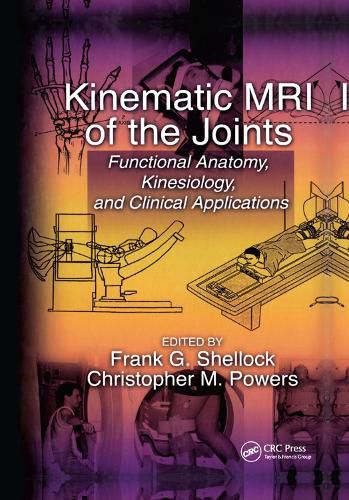Readings Newsletter
Become a Readings Member to make your shopping experience even easier.
Sign in or sign up for free!
You’re not far away from qualifying for FREE standard shipping within Australia
You’ve qualified for FREE standard shipping within Australia
The cart is loading…






Kinematic MRI refers to imaging a joint through a range of motion to examine the interactions between the soft tissue and osseous anatomy that comprise the joint. Kinematic MRI techniques were developed because various pathologic conditions are dependent on the specific position of the joint or in response to loading or stress. Importantly, static-view MRI examinations often miss abnormal findings because the joint is not assessed through a range of motion. Accordingly, the functional information obtained using kinematic MRI frequently serves to identify the underlying abnormality or to supplement the information acquired with standard MR imaging techniques.
Kinematic MRI of the Joints is the first textbook on this important, emerging clinical MRI application. For each joint, it presents pertinent functional anatomy, kinesiology, and clinical information; describes the kinematic MRI protocol and technique; explains the normal kinematics; and provides a thorough presentation of the pathokinematics. Multiple case examples illustrate the usefulness of kinematic MRI of the joints for diagnosis or elucidation of pathologic conditions.
Each section of this book is co-authored by an leading musculoskeletal radiologist orthopedic surgeon as well as by an academic-based physical therapist/biomechanist.
$9.00 standard shipping within Australia
FREE standard shipping within Australia for orders over $100.00
Express & International shipping calculated at checkout
Kinematic MRI refers to imaging a joint through a range of motion to examine the interactions between the soft tissue and osseous anatomy that comprise the joint. Kinematic MRI techniques were developed because various pathologic conditions are dependent on the specific position of the joint or in response to loading or stress. Importantly, static-view MRI examinations often miss abnormal findings because the joint is not assessed through a range of motion. Accordingly, the functional information obtained using kinematic MRI frequently serves to identify the underlying abnormality or to supplement the information acquired with standard MR imaging techniques.
Kinematic MRI of the Joints is the first textbook on this important, emerging clinical MRI application. For each joint, it presents pertinent functional anatomy, kinesiology, and clinical information; describes the kinematic MRI protocol and technique; explains the normal kinematics; and provides a thorough presentation of the pathokinematics. Multiple case examples illustrate the usefulness of kinematic MRI of the joints for diagnosis or elucidation of pathologic conditions.
Each section of this book is co-authored by an leading musculoskeletal radiologist orthopedic surgeon as well as by an academic-based physical therapist/biomechanist.